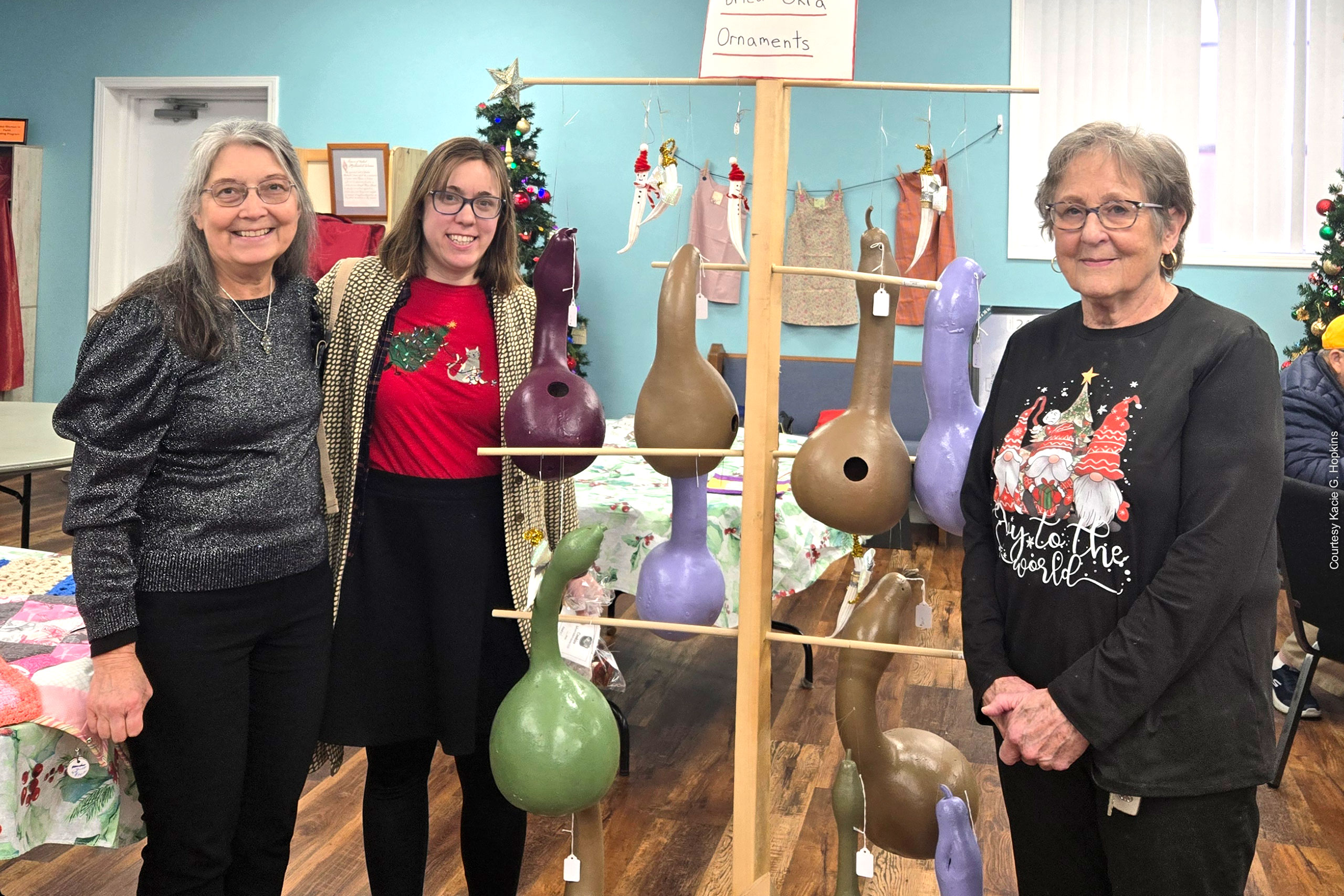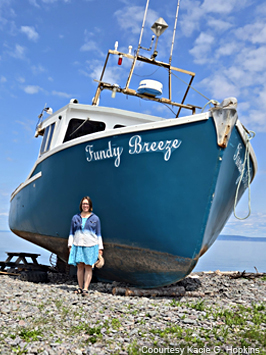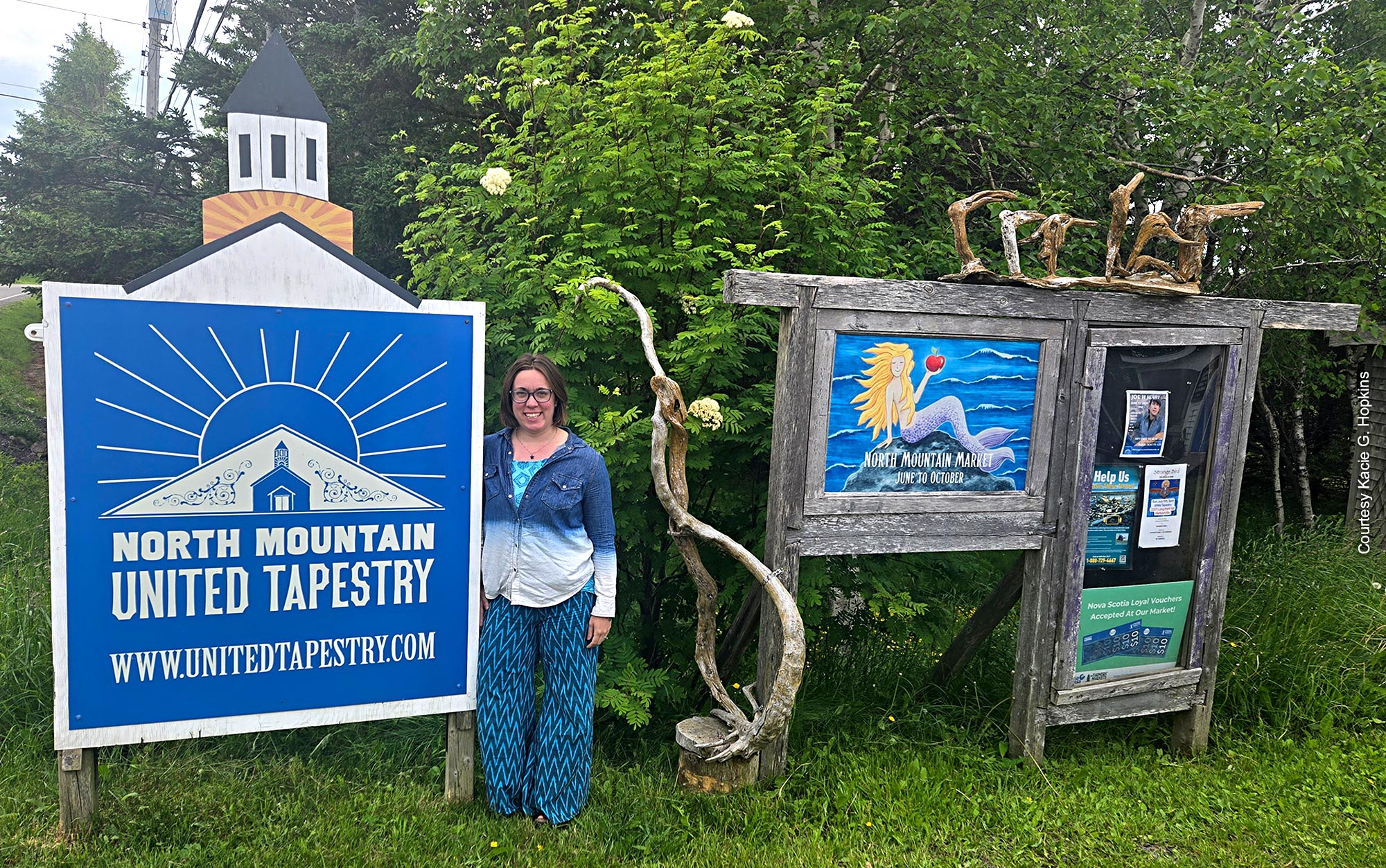
Latest News
Theressa Hoover Scholar: Connecting to Creativity and Co-ops in Rural Communities
Kacie Hopkins traveled to rural areas to find holistic, women-led solutions rooted in creativity, generosity, and community.
by Mary Beth Coudal
In her application for the Theressa Hoover Community Service and Global Citizenship Award, Kacie Hopkins proposed to study “the intersection of rural women’s economic empowerment and climate change.” She envisioned exploring how regions too often seen solely for what can be extracted — through mining, drilling, or logging — might instead offer holistic, women-led solutions rooted in creativity, generosity, and community.

Hopkins proposed immersing herself in three rural geographies to examine how women’s crafts could act as a regenerative sharing economy — what scholars Katherine Gibson and Julie Graham call a “community economy for social change.”
When I interviewed Hopkins, she was in the writing stage of her doctoral dissertation, speaking to me from outside Toronto, Canada. “Thanks to the grant,” she said, “I was able to travel, researching local empowerment, community service, and leadership.”
Hopkins focused on women’s work from a companionship model. Rather than observing from the outside, as if she was an omniscient researcher, Hopkins embedded herself within various communities, as if she was among the women, not better than or different from them. Coming from a United Methodist, white working-class, rural background herself, she relates to the women she met. Her approach, she explained, was shaped by “a feminist, decolonizing lens,” valuing the women for who they are, not aiming to change them.
Harbourville, Nova Scotia
Her first stop was Harbourville, a windswept town along Canada’s Bay of Fundy, where the women of the United Church of Canada host a craftmaking cooperative. In a region vulnerable to hurricanes and wildfires, local women transform what the sea offers, decorating and painting scallop shells, recycling designs from lobster rope, and making seaglass jewelry.

Here, a gift economy thrives: generosity is valued over profit. Each handmade object is both an offering and a prayer, a small act of sustainability, faith, and beauty. Hopkins learned that “more sustainable practices foment a rich way of life.”
Berea, Kentucky
Hopkins also traveled to Berea, Kentucky, a town with deep abolitionist roots and once home to writer bell hooks. hooks’ work on autoethnography — where no personal narrative is exempt from cultural context and critique — continued to inspire Hopkins to see everyday life as sacred and sensory-rich.
In Berea’s church community, Hopkins again observed faith expressed through the senses: the welcoming smiles of women around the table; the scent of homemade Christmas cookies; and the transformation of natural materials, such as dried okra pods and gourds into something beautiful, practical, and handmade.

Here, women shared their gifts not from obligation, but as an act of grace. Making crafts allowed for shared storytelling. “The women invited me to their weekly prayer shawl meeting, where they crocheted prayer shawls. I sat with the women and learned how to crochet. This was a gift to me.”
Hopkins’ reflections made me wonder: what everyday sights, smells, and stories shape our own faith lives? When have we turned ordinary objects or experiences into something sacred?
As Hopkins described her first impression of the gathering, she noticed how the room smelled of Christmas cookies — warm and homey. Freely shared, nature’s gift became more priceless and more valuable than money.
Rural Tennessee Roots
Hopkins’ journey, however, began much earlier — in rural Tennessee, where she also saw women draw strength from personal stories, nature, and scripture. She recalled how women craft Christmas ornaments from dried okra pods and crochet prayer shawls — each loop a blessing. Women rely upon equitable relational bonds, stronger than rigid hierarchies.
This, Hopkins noted, is a form of anti-capitalist Christianity: not transactional, but rooted in shared joy and the abundance of creative and regenerative giving.
Remembering Wisdom Passed Down
These learnings came from older mentors. “Most of the women around those tables were older than me,” she reflected. “There was a maternal presence there — gentle yet powerful.”

Hopkins’ stories brought to mind her grandmother-in-law Hildegard Sollenberger, a member of United Women in Faith (formerly United Methodist Women) from the Susquehanna Conference, who traveled the region for Mission u workshops, sharing stories of global mission — and spreading love like trays of her famous homemade brownies. Like the women Hopkins met in Kentucky and Nova Scotia, Sollenberger taught by doing, giving, and making.
For generations, United Women in Faith have treasured multi-generational friendships, celebrated rural women’s gifts, and uplifted handicrafts, natural resources, and simple hospitality. These offerings are abundant in rural communities, centered around church women and their craftmaking and story sharing.
Carrying on Theresa Hoover’s Legacy
One hundred years after her birth on September 7, 1925, Theressa Hoover’s legacy lives on through scholarships awarded to women like Hopkins. The scholarship is given to “a laywoman, between the ages of 21–35 who wishes to travel in order to explore and study in a country or region other than the applicant’s own.” The proposed projects must align with United Women in Faith’s priorities, encouraging study, exploration, and research that empower women globally.
Through her travels, Hopkins has shown how creativity and faith can transform overlooked communities — where craft and cooperation become prayer and possibility.
Mary Beth Coudal is a writer and teacher in New York City.

